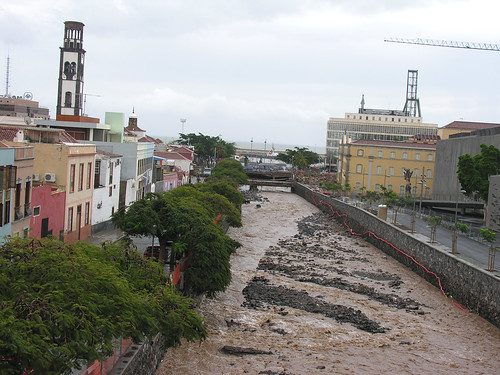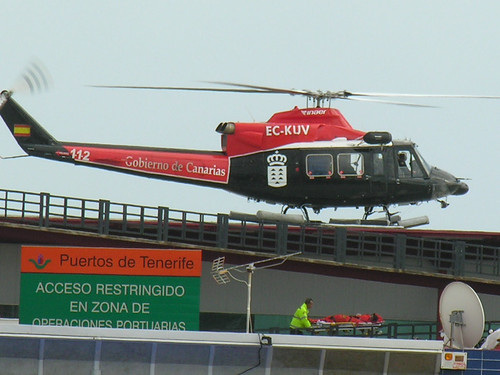Living on a volcanic rock in the middle of the Atlantic, leaves you little protection when nature kicks up rough. The storms were forecast, but just toyed with us on Sunday before unleashing their fury yesterday. I was back in Santa Cruz today in the company of 18 British students from Bucks New University, over for practical research into tourism, and airline and airport management.

Having arrived from the recent snows of High Wycombe, and seen much of yesterdays rain through a coach window, they took much of what they saw in their stride. The 90 kms per hour winds, and 187 litres of rain water per square metre, left 25,000 homes without power, officially the worst storm since the infamous killer of 31 March 2002 that claimed 8 lives. All 7 islands were hit, with 25,000 people having to manage without power, schools were closed and transport was severely disrupted.
Falling rocks on the main north to south motorway meant the students had a 4 hour journey back from Puerto de la Cruz yesterday, but emergency staff had done a great job, and we arrived in Santa Cruz in barely an hour from Playa de Las Americas. Travel was also helped by the fact that today was a holiday, and not many had to take to the roads. That meant we were greeted by a quiet Santa Cruz with road junctions bogged down with rocky sludge, but council workers were already busy with shovels and brooms.
As we split up in search of the few places open, I found a tram abandoned at the Teatro Leal stop, the whole system for both lines was still closed down. Barranco Santos (above) Â that runs down past the Heliodoro stadium, was flowing well, it was a raging torrent yesterday, I can never understand why they have built new roads and paths in there. A few cafes and shops were open, well the young visitors were there to observe the layout and general impression of the city, so they at least got a good general idea. On the way back to the coach, by the port, I spotted an emergency helicopter hovering and lifting an injured person to safety, although the sea was surprisingly calm.

Back on the coach and off to La Laguna, as the sun poked its way through the clouds. I showed principal lecturer and Doctor of Geotourism, Tom Hose around the historic centre, as most of the party went on to Los Rodeos airport to get a feel of how the place works, leaving a few others to scatter and explore La Laguna in their own way. There was much more open in La Laguna, and a feast of photo opportunities for our keen photographer doctor. The rain seemd to have done little damage to the historic centre of La Laguna, so the students found plenty to feed their enquiring minds before we headed back south. Keep an eye on www.tenerifemagazine.com for a more in depth look at the University field trip, and as for the rain, I think we have had more than enough of that for a good while.